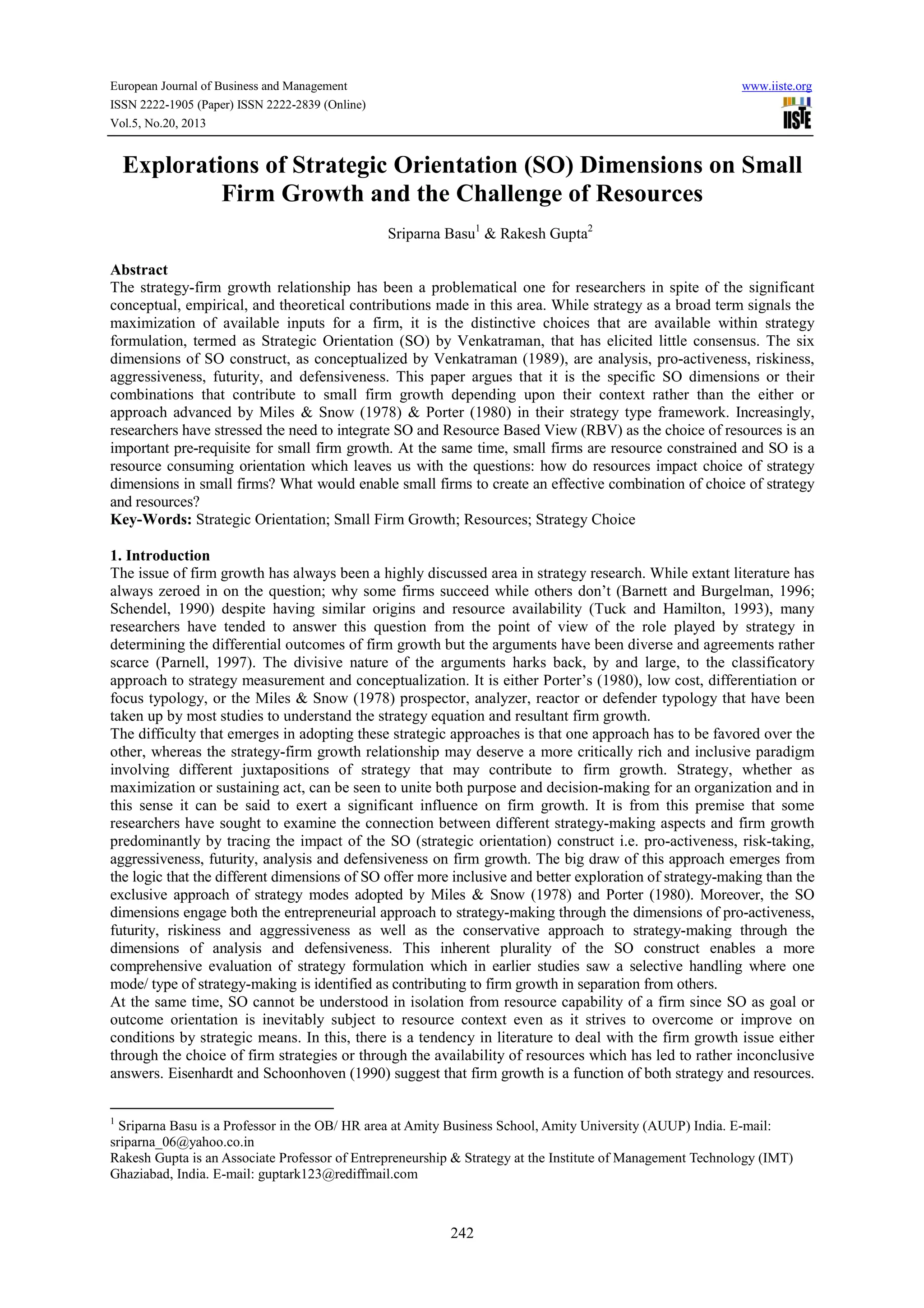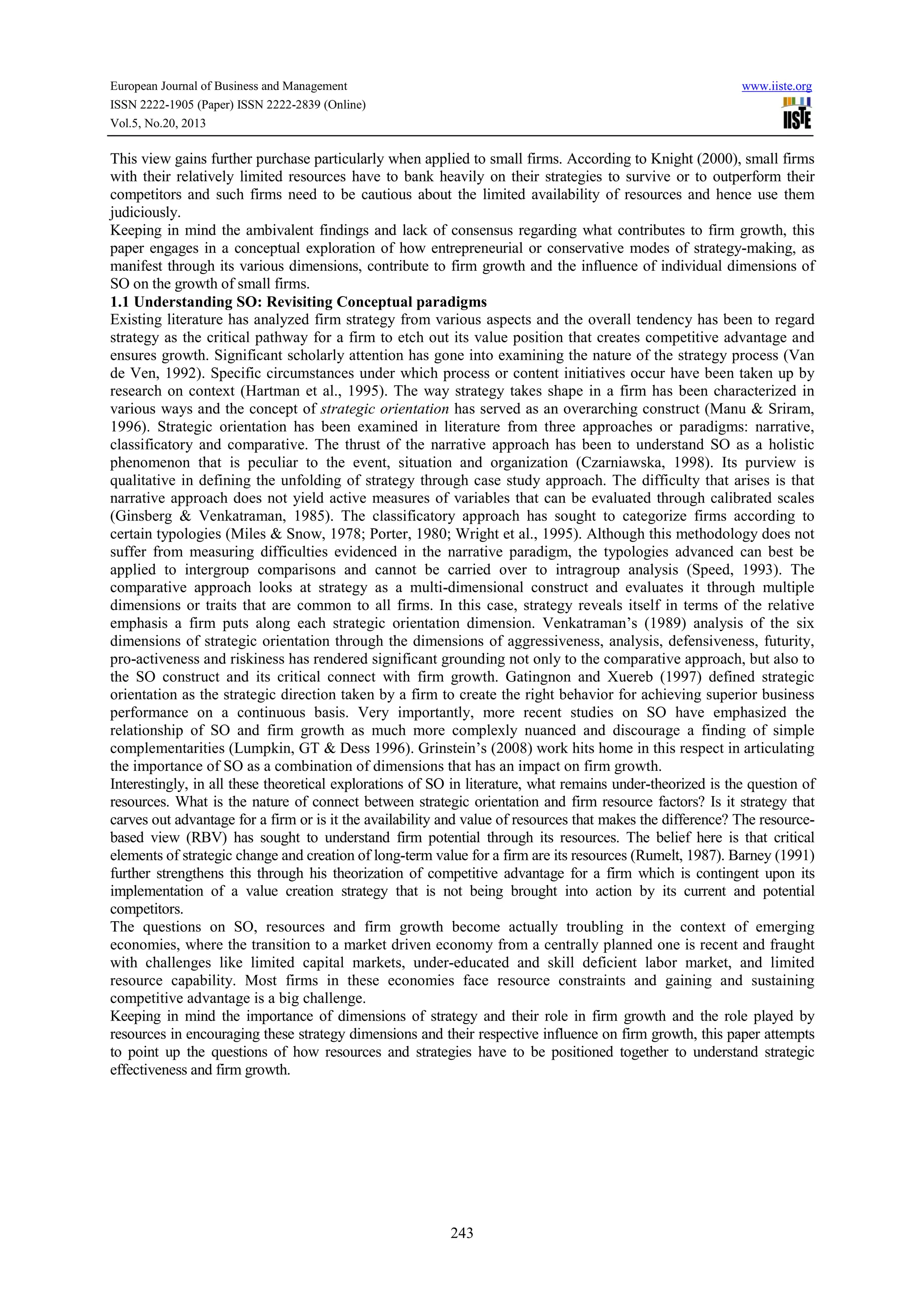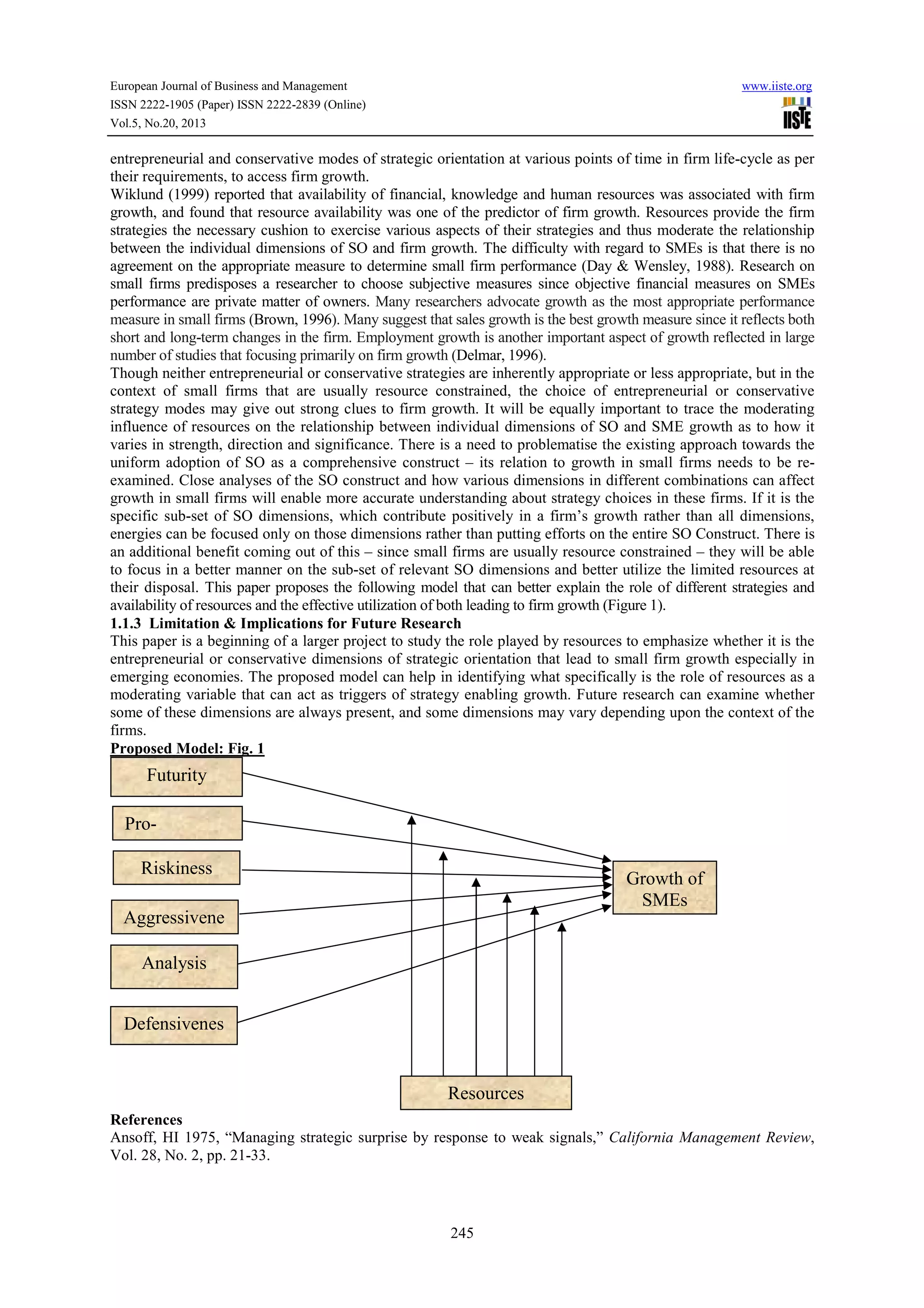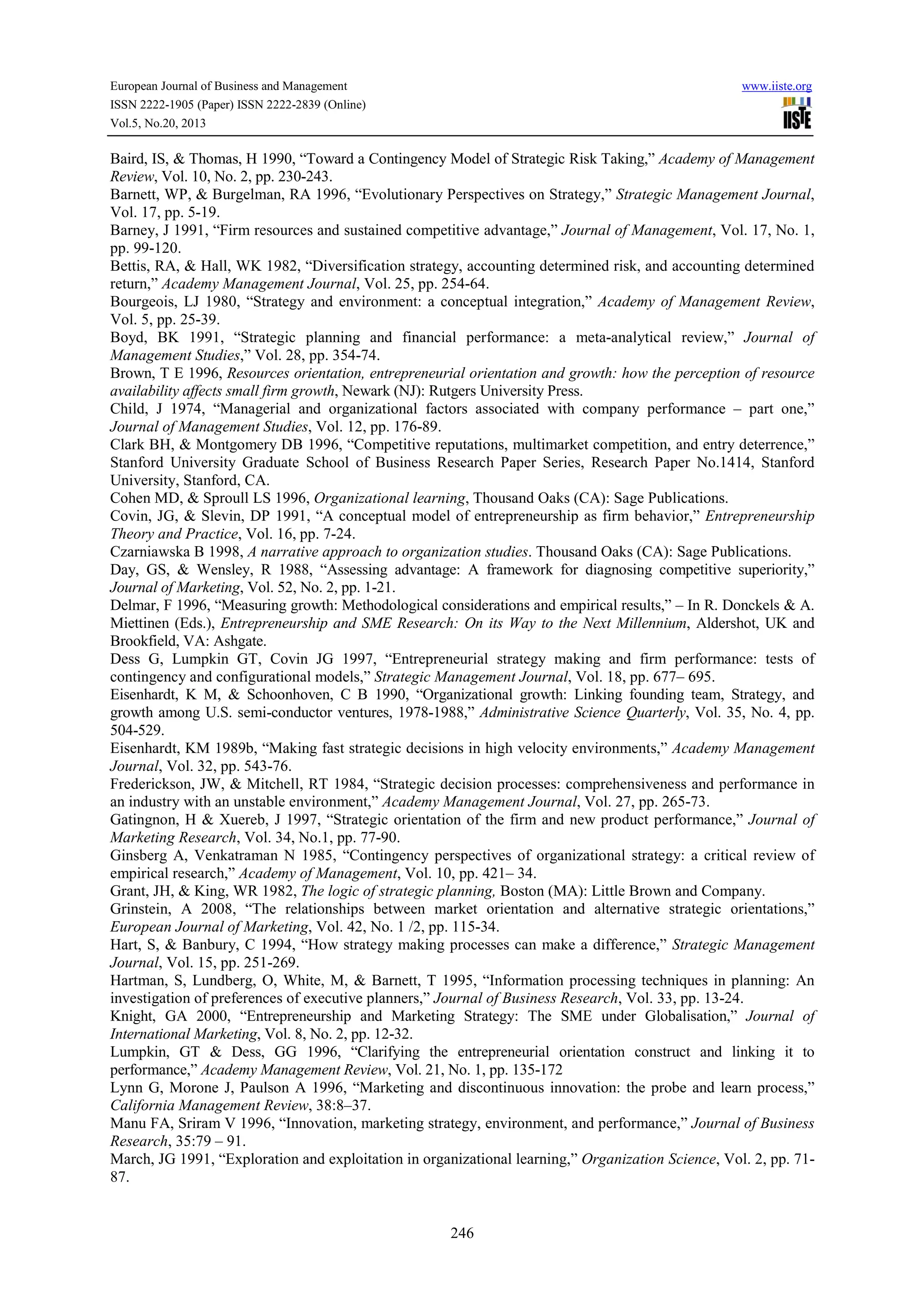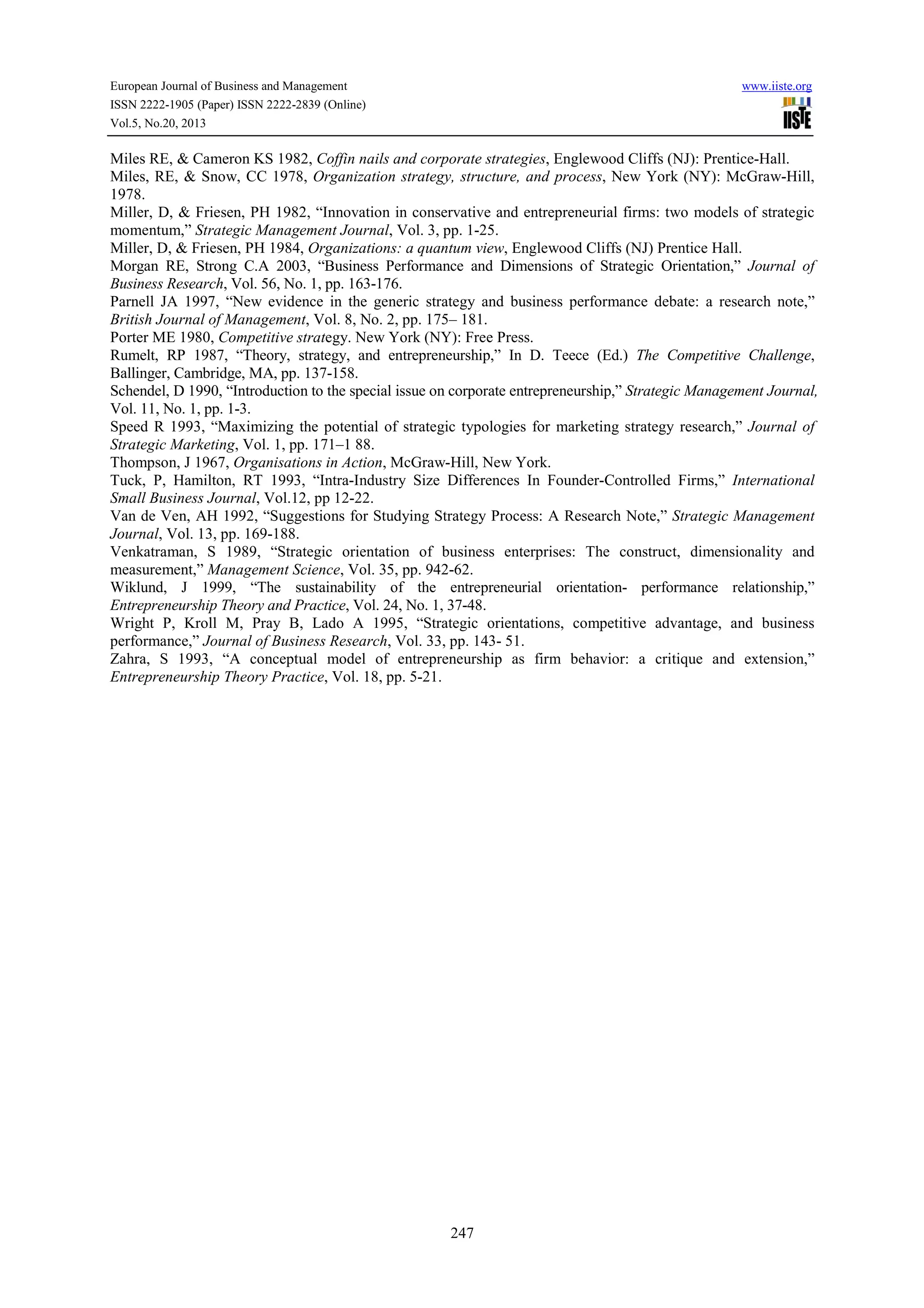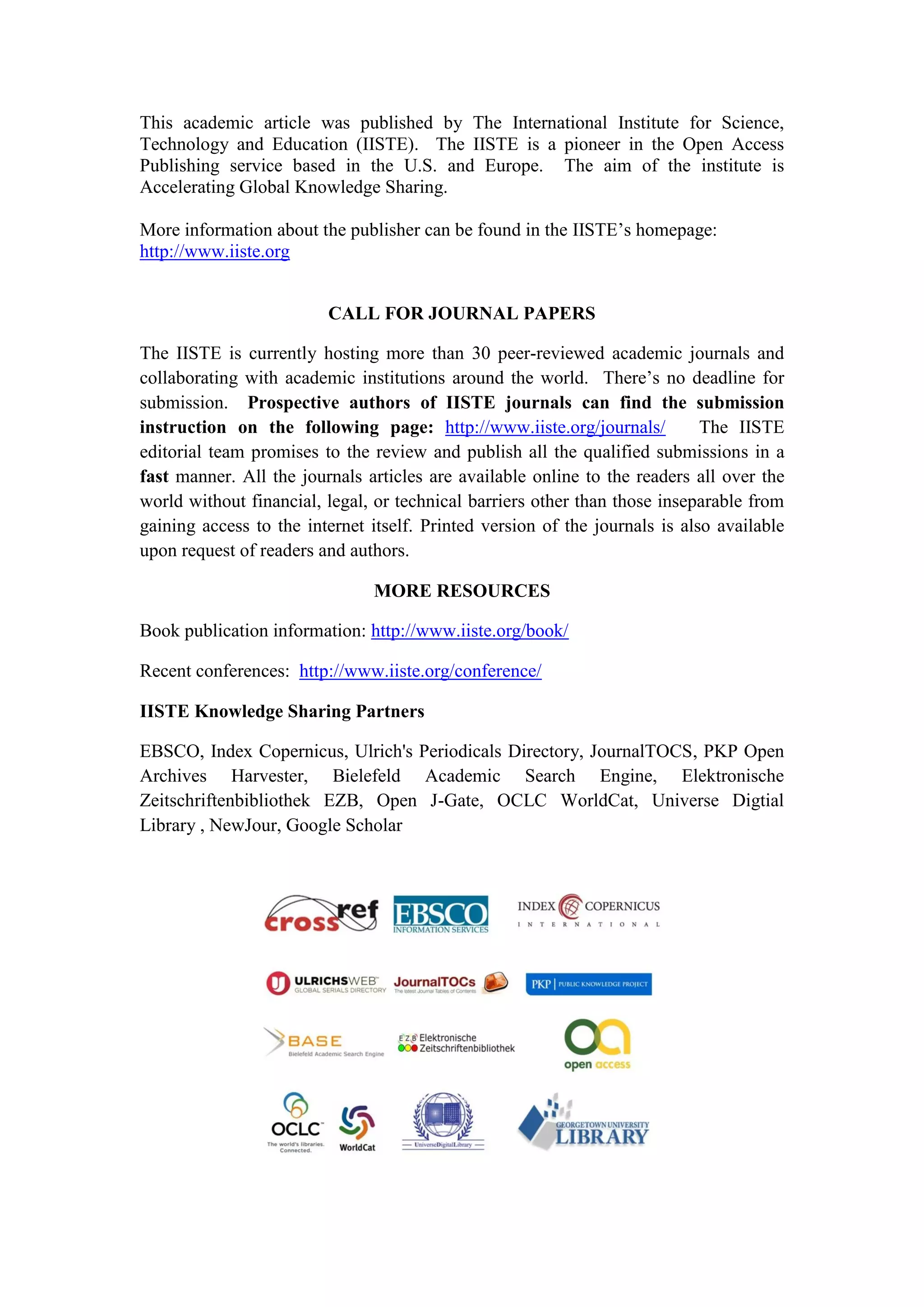This document discusses strategic orientation (SO) dimensions and their relationship to small firm growth. It addresses the following key points in 3 sentences:
The document explores how the six dimensions of SO (analysis, proactiveness, riskiness, aggressiveness, futurity, and defensiveness) may individually or combined contribute to small firm growth, and how a firm's resources may moderate this relationship. It also discusses how both entrepreneurial and conservative strategic orientations through various SO dimensions can promote growth at different stages, but that resource constraints make strategy choice more important for small firm performance. The paper argues that understanding the interaction between SO dimensions, resources, and growth is needed to assess strategic effectiveness for small firms.
